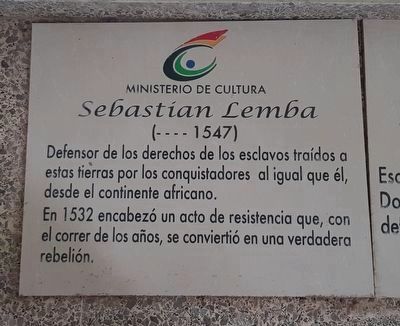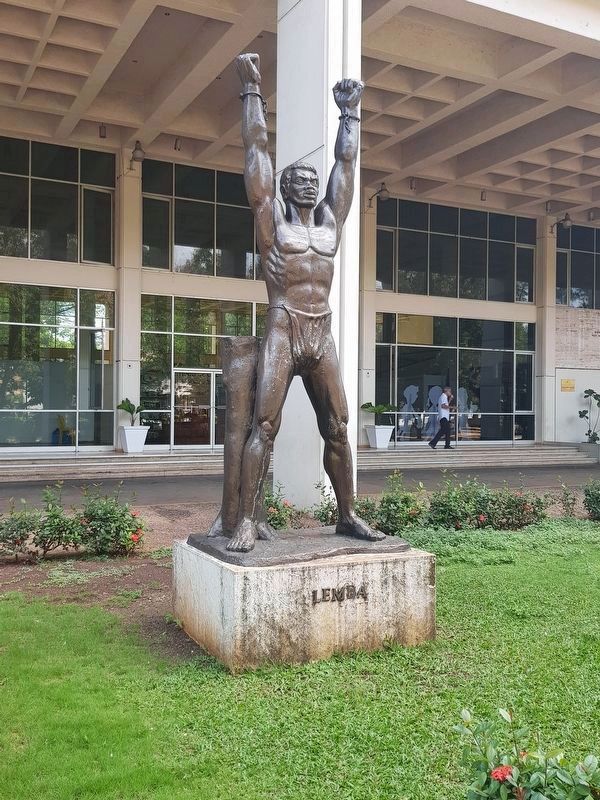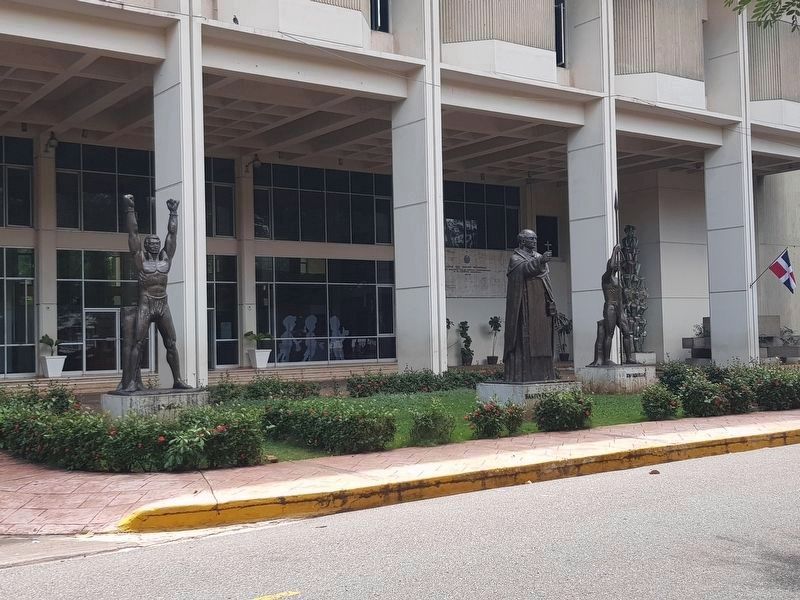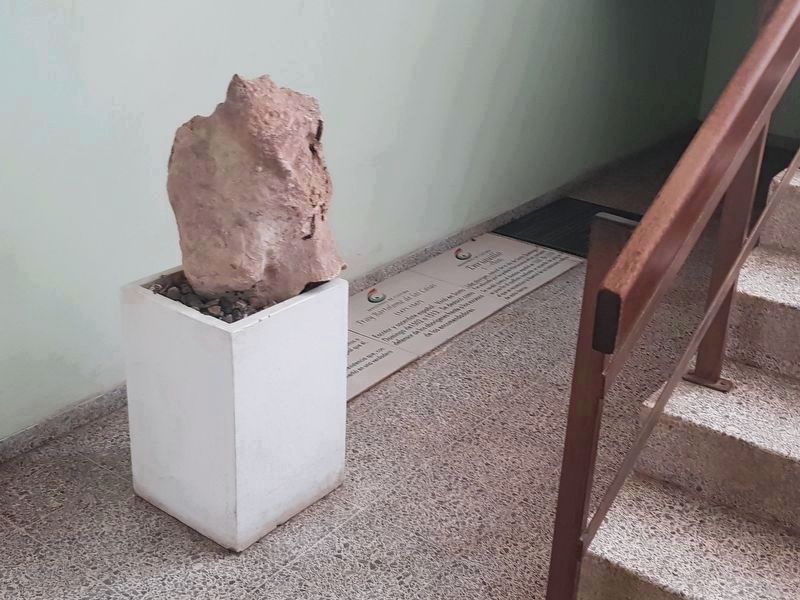Gazcue in Santo Domingo, Distrito Nacional, Dominican Republic — Caribbean Region of the Americas (Hispaniola, Greater Antilles, West Indies)
Sebastián Lemba
(---- 1547)
En 1532 encabezó un acto de resistencia que con el correr de los años, se conviertió (sic, convirtió) en una verdadera rebelión.
(? -1547)
In 1532 he led an act of resistance that, through the years, became a true rebellion.
Erected 1980 by Ministerio de Cultura.
Topics. This memorial is listed in these topic lists: African Americans • Colonial Era • Wars, Non-US. A significant historical year for this entry is 1532.
Location. 18° 28.357′ N, 69° 54.483′ W. Marker is in Gazcue, Distrito Nacional, in Santo Domingo. Memorial can be reached from Avenida Pedro Henríquez Ureña just east of Calle Benito Juárez, on the right when traveling east. The marker is currently inside of the Museo del Hombre, on the left of the steps leading up to the second floor. It was previously mounted to the statue of Lemba directly north of the Museum. Touch for map. Marker is in this post office area: Gazcue, Distrito Nacional 10205, Dominican Republic. Touch for directions.
Other nearby markers. At least 8 other markers are within walking distance of this marker. Friar Bartolomé de las Casas (a few steps from this marker); Enriquillo (a few steps from this marker); Juan Pablo Duarte (a few steps from this marker); Black Jack (within shouting distance of this marker); Carlos Andújar (within shouting distance of this marker); Rafael González Tirado (within shouting distance of this marker); Hugo Estrella Guzmán (about 150 meters away, measured in a direct line); Pedro Conde Sturla (about 150 meters away). Touch for a list and map of all markers in Gazcue.
Regarding Sebastián Lemba. "Sebastián Lemba was a sixteenth-century maroon of Cameroonian origins who waged continuous war for nearly two decades on Spanish encomenderos. He commanded a standing army of four hundred rebels at any given time. He was, according to Jane Landers, "one of the most feared of the maroon leaders of the 1540s." The details of Lemba's demise are uncertain - either he died in the palenque (cimarrón settlement) named for him and his head was hung in the capital, or he was taken prisoner and executed there. In any
event, Governor López Serrata recorded his death with great relief in 1547. Unlike Enriquillo's, Lemba's story has been neither mythologized nor nationalized in any extensive manner. Indeed, his statue was not added to the Museo's frontispiece until 1980, nearly a decade after the Museo opened, and then only because the political climate- a brief, post-Balaguer economic and political restructuring moment that coincided with the New Wave's increasingly visible activism - allowed for a revisiting of official Dominican historiography." ...from Black Behind the Ears: Dominican Racial Identity from Museums to Beauty Shops, Ginetta E. B. Candelario
Credits. This page was last revised on June 3, 2018. It was originally submitted on May 31, 2018, by J. Makali Bruton of Accra, Ghana. This page has been viewed 889 times since then and 77 times this year. Photos: 1, 2. submitted on May 31, 2018, by J. Makali Bruton of Accra, Ghana. 3, 4. submitted on June 1, 2018, by J. Makali Bruton of Accra, Ghana.



